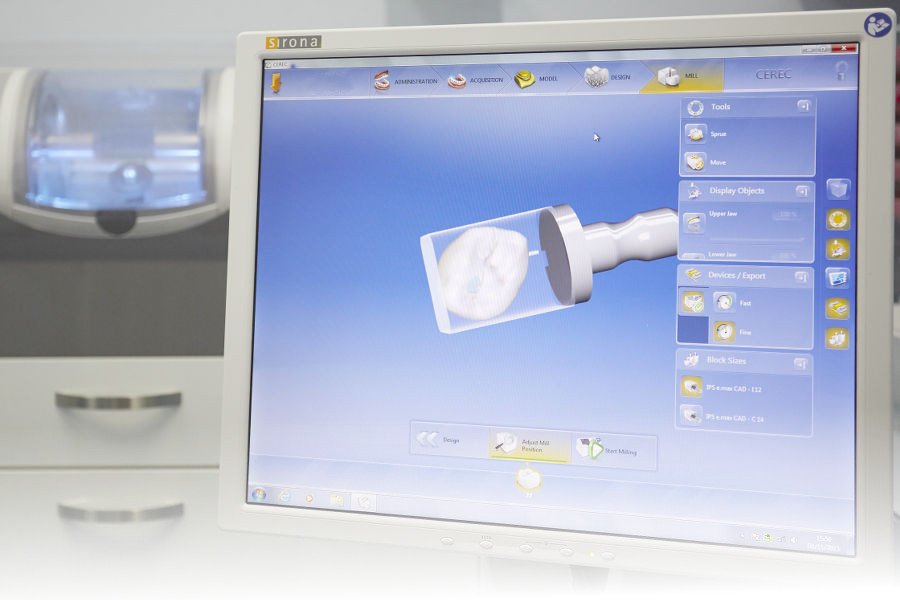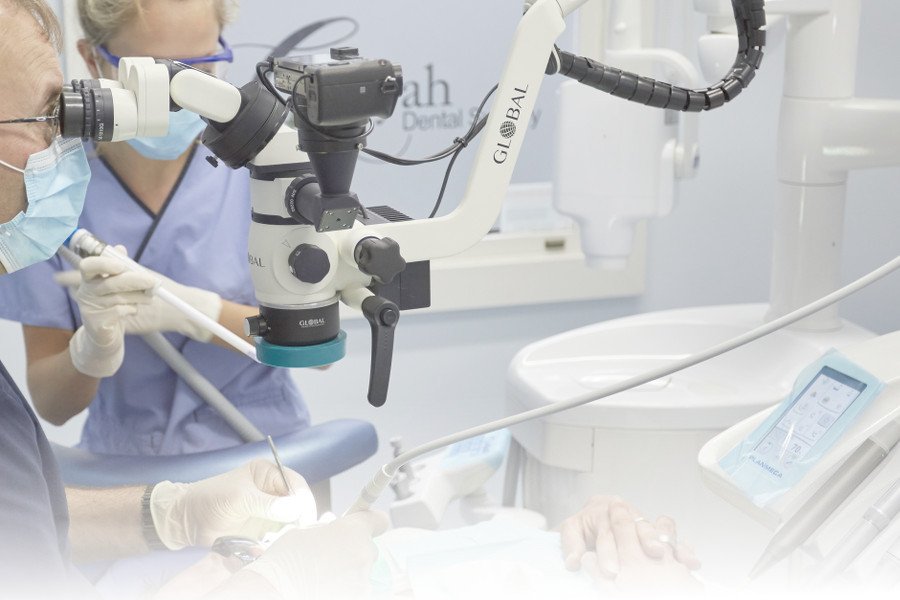Root canal treatment

Root canal treatment can save a tooth
Your teeth are meant to last a lifetime. Years ago, diseased or injured teeth were often pulled out. But today, even if the pulp inside one of your teeth is injured or infected, the tooth often can be saved through root canal (endodontic) treatment. Endodontics is the branch of dentistry that deals with treating diseases or injuries to the dental pulp.
What happens if the dental pulp is injured?
The pulp is soft tissue inside the tooth that contains blood vessels and nerves. When the pulp is diseased or injured and unable to repair itself, it dies.
The most common causes of pulp death are a cracked tooth, a deep cavity, problems with large fillings, or serious injury to the tooth. All of these can allow bacteria to enter into the pulp.
Why should the pulp be removed?
If the problem pulp is not removed, the tissues around the root of the tooth can become infected, often resulting in pain and swelling. An abscess forms. Even if there is no pain, bacteria can damage the bone that anchors the tooth in the jaw. Without treatment, the tooth may have to be extracted.
Removing a tooth can create problems
When a tooth is extracted and not replaced, the teeth around it may shift from their normal position. Shifted teeth may make biting and chewing difficult. They may also make it harder to clean your teeth. Areas that are not cleaned well are more likely to get gum disease.
Root canal treatment can prevent these problems by saving your natural tooth. A natural tooth is always better than a replacement tooth. Root canal treatment is usually less expensive than replacing a tooth.
Who will carry out my treatment?
At Gunyah Dental all endodontic work is carried out by Dr Tony Appleton. Dr Tony Appleton dedicates a large part of his dental practice to endodontic care, concentrating on root canal therapy. During his 29 years working as a dentist he has developed a special interest in the anatomy, diseases and treatment of the tiny root canals that make up the structure of all teeth and takes referrals from other dentists. A key development in the success of his root canal treatments is his use of a high-powered microscope. Pioneered in the late 1990s, the operating dental microscope allows the operator to see the inside of a tooth and the root canal system at a magnification of up to 25 times, with added lighting. This is especially beneficial for accurate visualisation of the complex anatomy within the root canal system.

This magnified view of the root canal system is important because:
- teeth often have extra roots or canals that cannot be seen with the naked eye or loupes (glasses with magnification)
- crowns or big fillings in teeth often make it difficult to see the inside of a tooth, and special light from the microscope is required to see the floor of these teeth
- often teeth can have fractures or other abnormal anatomy, and these can be detected and treated early, rather than after the event – when treatment fails
How can endodontic treatment help me?
Dr Tony Appleton removes the inflamed or infected pulp, carefully cleans and shapes the canal system and then seals the prepared space. Most treatment is now performed in a single appointment ranging from 45-90 minutes (depending on the number of canals). Once treatment is completed, your tooth will be permanently restored or if you have been referred to Tony you will be instructed to return to your dentist for reconstruction. The restoration of the tooth is an important part of treatment because it seals the cleaned canals from the oral environment, protects the tooth, and restores it to function.
Advances in technology and additional training and postgraduate education have allowed Tony to enjoy a high success rate in his endodontic work. Contrary to outdated perceptions, treatment usually does not require multiple visits and need not be painful at all.
Do I need to have a crown after root canal treatment?
In order to get access to the pulp chamber and nerve canals inside the tooth during root canal treatment, Dr Appleton often has to remove a considerable amount of tooth substance. This can weaken the tooth and make it more vulnerable to pressure if the tooth is rebuilt with conventional filling materials. Therefore he may recommend a crown be put on top of the root filled tooth after the root canal treatment has been completed to protect the tooth from cracking.
At this practice we are able to create a beautiful and strong crown to secure your tooth using the latest advanced CEREC technology. This can be carried out in one visit.
How long will the restored tooth last?
A tooth with a root canal filling can last for years. Teeth with root canal fillings can, however, become decayed or fractured, or get gum disease, just like any other teeth. Daily cleaning and regular exams will help you keep your teeth healthy, whether they have had root canals or not.
I've read that root canal treatment can cause illness - is this true?
Patients searching the Internet for information on root canals may find sites claiming that teeth receiving root canal (endodontic) treatment contribute to the occurrence of illness and disease in the body. This claim is based on long-debunked and poorly designed research performed in the 1920s by Dr. Weston A. Price. Dr. Price stated that bacteria trapped in the teeth during root canal treatment could “leak” and cause almost any type of disease, including arthritis, heart disease, kidney disease and others. This was before medicine understood the causes of these illnesses. At the time, Dr. Price recommended tooth extraction instead of endodontic treatment.
The truth
The American Association of Endodontists state that there is no valid, scientific evidence linking root canal-treated teeth and disease elsewhere in the body.
In fact, by the early 1930s, a number of well-designed studies discredited Dr. Price’s research, and no subsequent research has supported Dr. Price’s findings. In 1951, the Journal of the American Dental Association devoted an entire issue to a review of the scientific literature and concluded that there was no evidence supporting Dr. Price’s theory and that his research techniques from the 1920s lacked many aspects of modern scientific research. The ADA recommended endodontic treatment as the standard of practice for teeth that could be saved. Recent research continues to support the safety of dental treatment as it relates to overall health.
- The presence of bacteria in teeth and the mouth has been an accepted fact for many years. But the presence of bacteria does not constitute "infection" and is not necessarily a threat to a person's health. Bacteria are present in the mouth and teeth at all times, even in teeth that have never had a cavity or other trauma. Research shows that the healthy immune system takes care of bacteria in a matter of minutes.
- When a severe infection in a tooth requires endodontic treatment, that treatment is designed to eliminate bacteria from the infected root canal and prevent re-infection of the tooth.
- Tooth extraction is a potentially traumatic procedure and is known to cause a significantly higher incidence of bacteria entering the bloodstream; endodontic treatment confined to the root canal system produces much less trauma and a much lower incidence and magnitude of bacteria entering the blood stream.
- There is no adequate replacement for the natural tooth - it should be saved whenever possible. Endodontic treatment, along with appropriate restoration, is a cost effective way to treat infected teeth because it is usually less expensive than extraction and placement of an implant. In most cases, endodontic treatment allows patients to keep their natural teeth for a lifetime.






